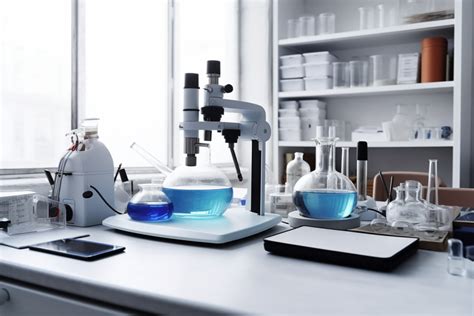1.UnderstandingLighting
```html
Exploring the World of Laboratory Photography: Tips and Tricks
Laboratory photography is a unique niche that requires a blend of technical skills and creativity to capture the essence of scientific exploration. Whether you're documenting experiments, showcasing equipment, or capturing the intricate beauty of specimens, mastering the art of laboratory photography can greatly enhance scientific communication and visual storytelling. Below are some tips and tricks to help you excel in this specialized field:
Lighting plays a crucial role in laboratory photography. Since laboratories often have controlled lighting conditions for experiments, utilize available light sources such as overhead fluorescent lights or LED panels. However, be mindful of harsh shadows and glare. Consider using diffusers or reflectors to soften the light and minimize reflections.
Invest in a good quality camera with manual settings to have control over exposure, aperture, and shutter speed. A macro lens can be particularly useful for capturing intricate details of specimens or equipment. Additionally, tripod stability is essential, especially for long exposures or closeup shots.
Safety should always be a priority in laboratory settings. Familiarize yourself with the lab's safety protocols and wear appropriate personal protective equipment (PPE) such as lab coats, gloves, and safety goggles. Ensure that your photography equipment does not interfere with ongoing experiments or compromise safety measures.
Pay attention to composition and framing to create visually appealing images. Experiment with different angles and perspectives to highlight key elements of the scene. Consider using the rule of thirds or leading lines to draw the viewer's eye towards the focal point.
Postprocessing can enhance the quality of your laboratory images. Use software like Adobe Photoshop or Lightroom to adjust exposure, contrast, and color balance. However, avoid excessive editing that may distort the scientific accuracy of the images.
Collaborate closely with scientists and researchers to understand the significance of their work. Communicate effectively to capture images that accurately represent their research findings. Building strong relationships with scientists can lead to more opportunities for impactful photography projects.

Keep abreast of the latest photography techniques and trends through workshops, online courses, and networking events. Experiment with new ideas and techniques to push the boundaries of your creativity. Don't be afraid to learn from mistakes and refine your skills over time.
Mastering laboratory photography requires a blend of technical expertise, creativity, and collaboration. By understanding the unique challenges and opportunities of this niche field, you can create compelling images that showcase the beauty and complexity of scientific exploration.
